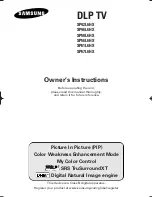
WARNINGS:
1. Be aware of any additional fall hazards
at the anchor ends of the line.
2. If working in restraint your system
should be set up to prevent a fall from
occurring.
3. Be aware of all medical conditions that
could affect the safety of the user in
normal and emergency use.
4. This equipment should only be used by
persons trained and competent in its
safe use.
5. A rescue plan should be in place to deal
with any emergencies that may arise
during work.
6. No alterations, additions or repairs
should be made to this equipment
without the written consent of P+P.
7. The equipment should not be used
outside the limitations, or for any other
purpose that it is intended for.
8. The safe function of one item of
equipment may interfere with the safe
function of another with certain
combinations of equipment.
9. In any fall-arrest system, the free space
required below the user should always
be ensured.
10. If in any doubt about the use or care of
P+P equipment, please contact P+P.
INSPECTION AND EXAMINATION
Keep these instructions, or a copy with the
Horizontal Lifeline to aid future inspection and
examination. Examination by a competent
person at intervals of 6 months is mandatory
under The Work at Height Regulations 2005.
The Horizontal Lifeline should also be
examined before every use by the
user/installer, particular attention being paid to
the following:-
Webbing
– check for cuts, cracks, tears,
abrasion and scorch marks, burns or chemical
attack
Stitching
– Look for broken stitch, loose or
worn threads.
Metalware
– Inspect for signs of damage or
distortion and that all moving parts and springs
are fully operational.
The HLL should be removed from service
and inspected after being subjected to any
fall.
Local abrasion as distinct from general wear
may be caused by the passage of the webbing
over sharp edges or protrusions while under
the tension and may cause serious loss of
strength. Slight damage to outer fibres and
occasional yarn may be considered harmless
but serious reduction in width or thickness of
the webbing or serious distortion to the weave
pattern should lead to rejection.
NOTE:
As a guide to establish how much wear
is acceptable, a distinct black thread of a
different construction, is woven into the
selvedge of the black webbing. (Fig. L). When
this becomes clearly visible, it should be
inspected and refurbished by P+P, for further
details of the level of service in your area
contact your supplier.
PAMMENTER & PETRIE LIMITED
140-146 Brearley Street. Hockley, Birmingham B19 3XJ
Tel: +44 (0) 121 359 4561 (Sales)
Tel: +44 (0) 121 503 5860 (Training)
Fax: +44 (0) 121 359 4136
Website: www.pammenter.co.uk E-mail: [email protected]
Black Thread

























